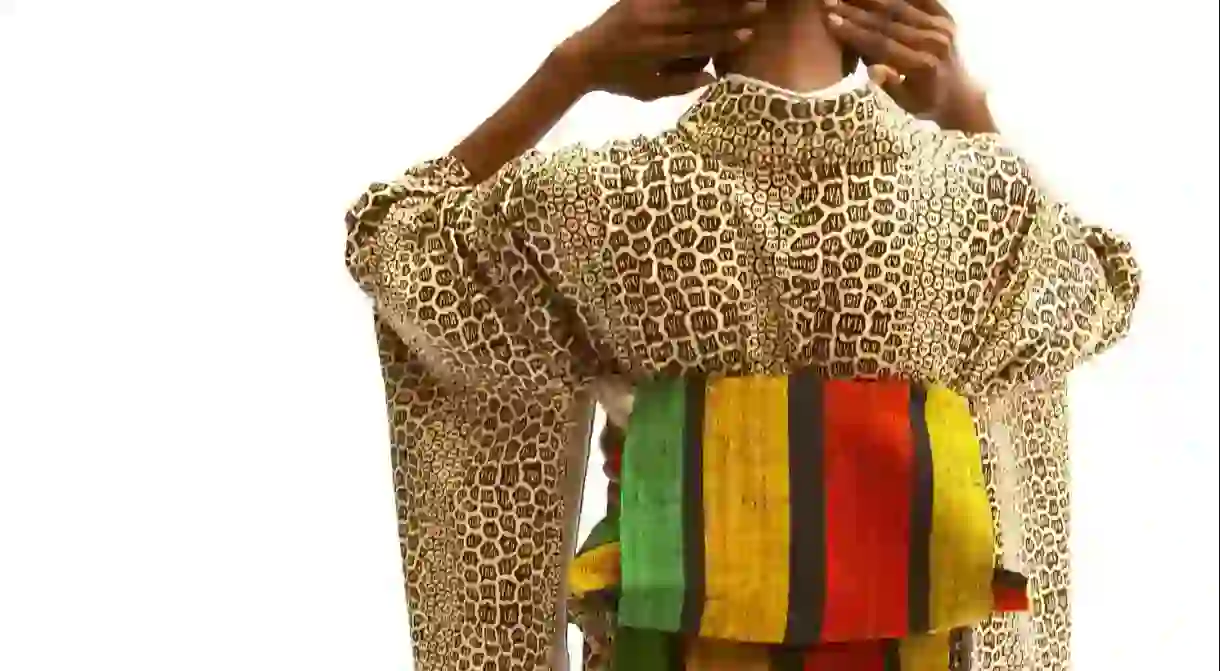Wearable Art Exploring How Japan and West Africa Intersect

In his little-over-40 years on earth, Serge Mouangue has been exposed to the intricacies of various cultures. The artist, industrial designer, and architect was born in Cameroon, grew up in Paris, and his family is half-Australian by virtue of his wife. However, given his increasingly famous strides in developing the brand Wafrica, in his time that he lived there, Japanese culture appears to have had a hugely significant and lasting impression on Mouangue’s present artistic endeavours.

Mouangue’s arrival in Japan over a decade ago promptly drew his attention to the cultural similarities between the country and his home continent. He decided to design and produce his appreciation for this compelling connection through Wafrica. Wafrica (portmanteau of “wa” for Japan, and “Africa”) is a celebration of Japanese and West African cultures, moulded together to forge an aesthetically powerful, wearable art – the traditional kimono with a magnificent side of West African prints and fabrics. But Wafrica is not about fashion or commercialisation. It’s about artistic expressions of cultures.

Wearable art as designed by Mouangue is an intriguing story of the meeting of two rich cultures. Coming across a Wafrica kimono, Mouangue’s artistic objective to make a cultural statement is immediately recognisable. The kimono designs establish a fine cultural blend that tugs at the strings of traditional identities found in Japan and West Africa, with its use of their cotton and silk fabrics and prints, yet adeptly creating and maintaining a distinct identity. Hence the emergence of what the artist refers to as “the third aesthetic”. The similarities in Japanese and African cultures that Mouangue draws from to create his third aesthetic include tribalism, a respect for hierarchy, and the levels of thought and precision that go into dressing women up to portray traditional values and class.

Mouangue has repeatedly stated that he wants his kimonos to be transcendental of both Japanese and African cultures, and evoke a more accommodating cultural effect for those who have to frequently remind themselves of where they come from. As someone who moves about rather often, Serge Mouangue is passionate about reminding humans of our apparent and ethereal connections, regardless of our cultural origins or background. He is also passionate about sharing Africa’s rich mulitculturalism with the world.
Wafrica designs also seek to showcase the importance of cross-cultural values, and urge people to respect, appreciate, and learn from cultures outside their own – especially given the current global sociopolitical climate, which is seeing a rise of nationalism that unfortunately parades hostility and exclusionism.

In keeping with cultural inclusion within its brand, Wafrica employs the use of vibrant colours and patterns that are aimed at attracting younger individuals to the beauty, sophistication, and timelessness of the kimono’s aged traditional designs. Beyond this, Wafrica has expanded its designs over time to include ancient treasures and practices – such as the iconic Japanese tea ceremony and vintage African stools – as well as art performances and fragrances, to further celebrate the coming-together of stimulating heritages.













